24/06/15
Climate-resilient Nepal survives the earthquake
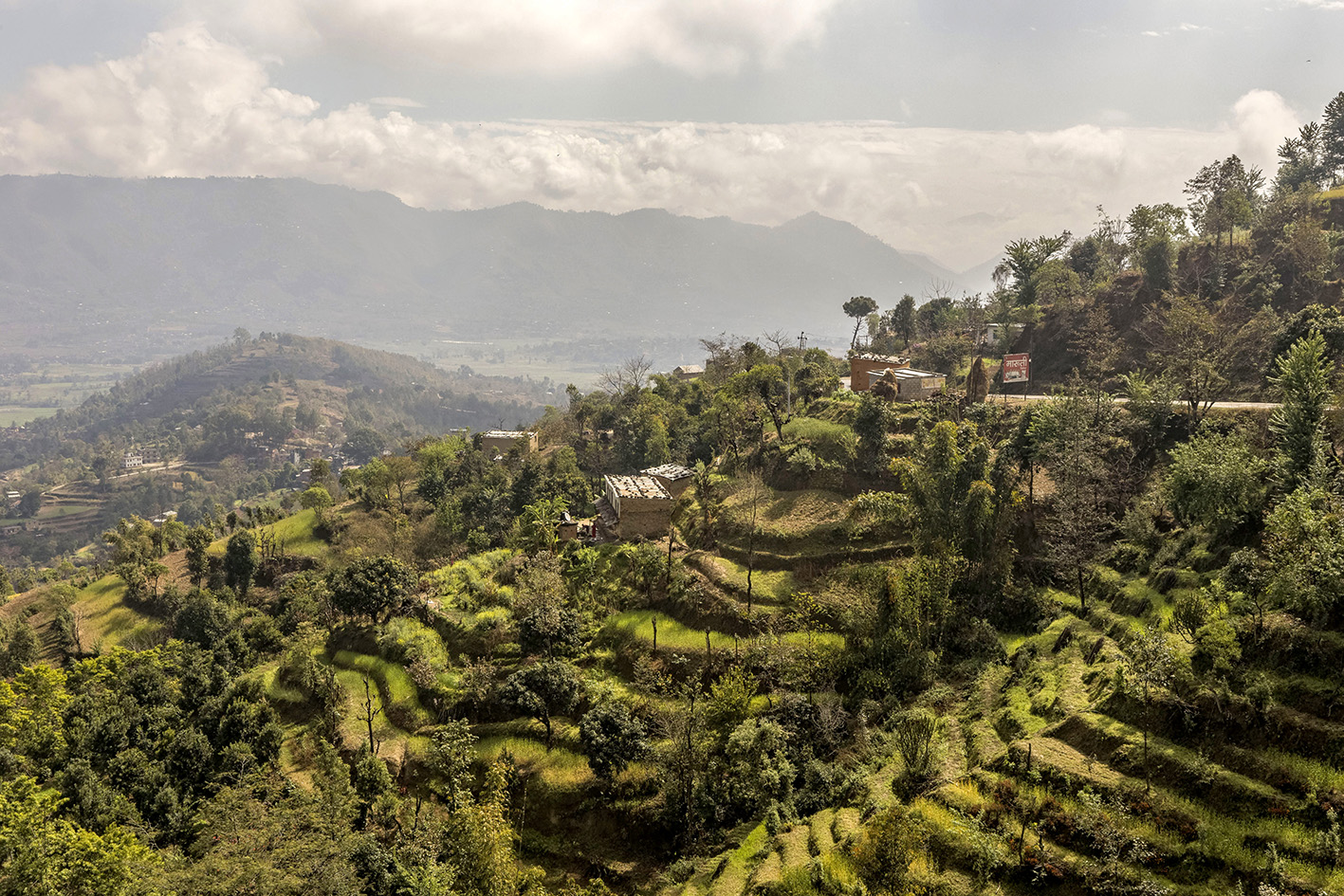
Terraced fields in Kavre district in Kathmandu Valley, about 40 kilometres from Nepal’s capital. Two villages in the district have become ‘smart’ to help them adapt to climate change
Paola Di Bella
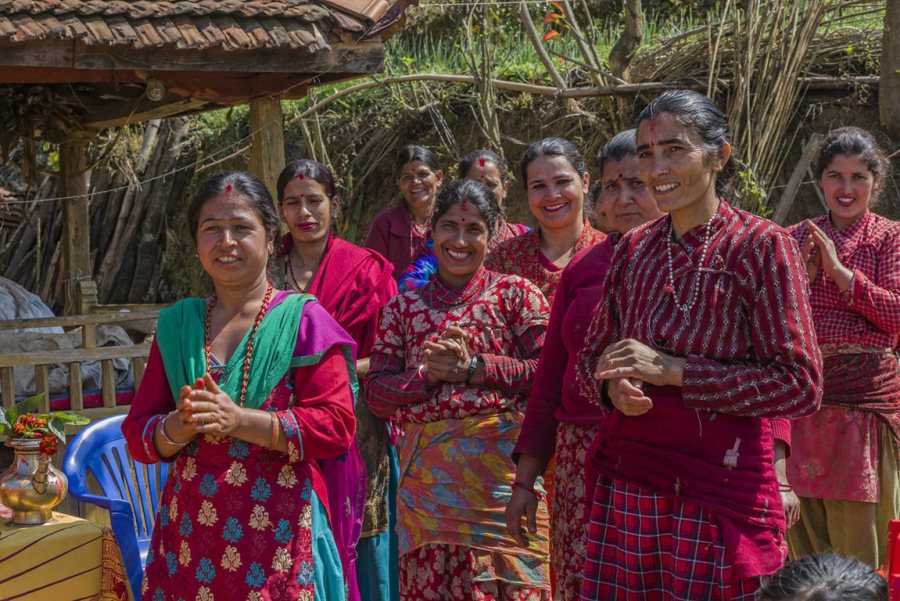


Some of the women of Kalchhebesi, one of the ‘climate smart villages’. More than two million Nepalis, nearly ten per cent the population, work abroad. Most of them are men, and this leaves Nepali women on the front line of efforts to manage natural resources and adapt to climate change
Paola Di Bella
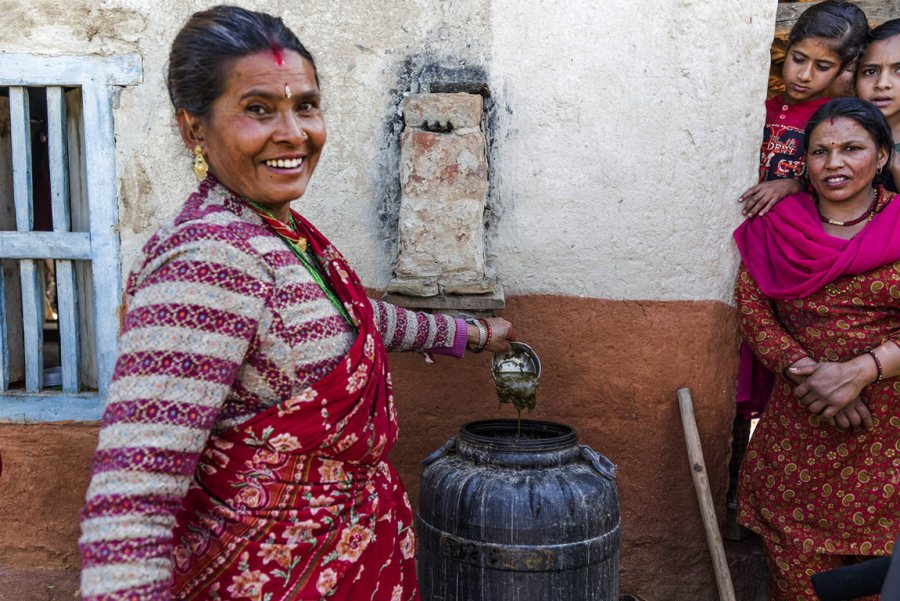


The urine from livestock can be mixed with the insect-killing leaves of plants such as neem to produce a liquid that is a natural pesticide and fertiliser, allowing communities to switch to organic farming and improve their income
Paola Di Bella
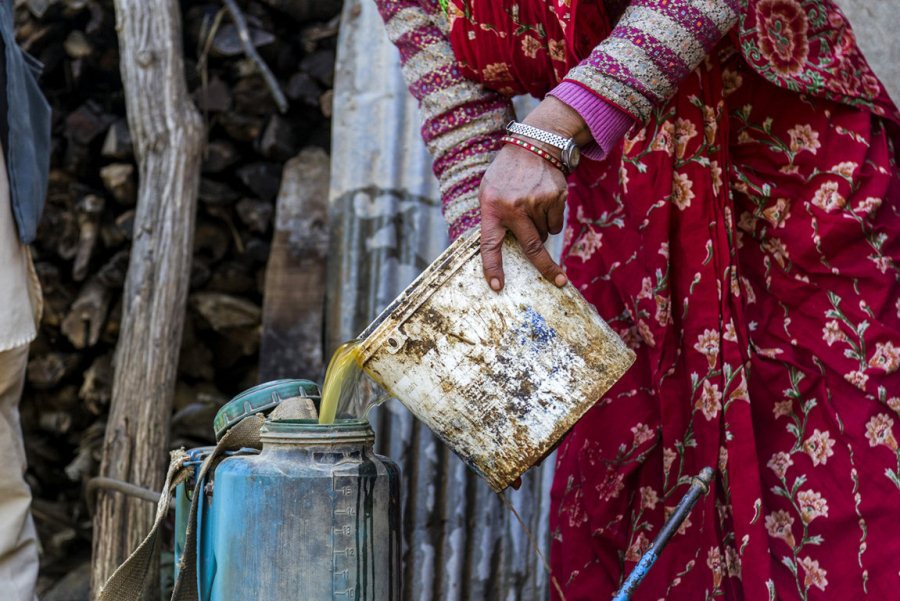


Cow’s urine contains nutrients such as uric acid, sodium chloride, calcium sulphate and magnesium sulphate. Because of this, it is used to improve soil fertility and as an alternative to the chemical fertilisers local farmers previously used
Paola Di Bella
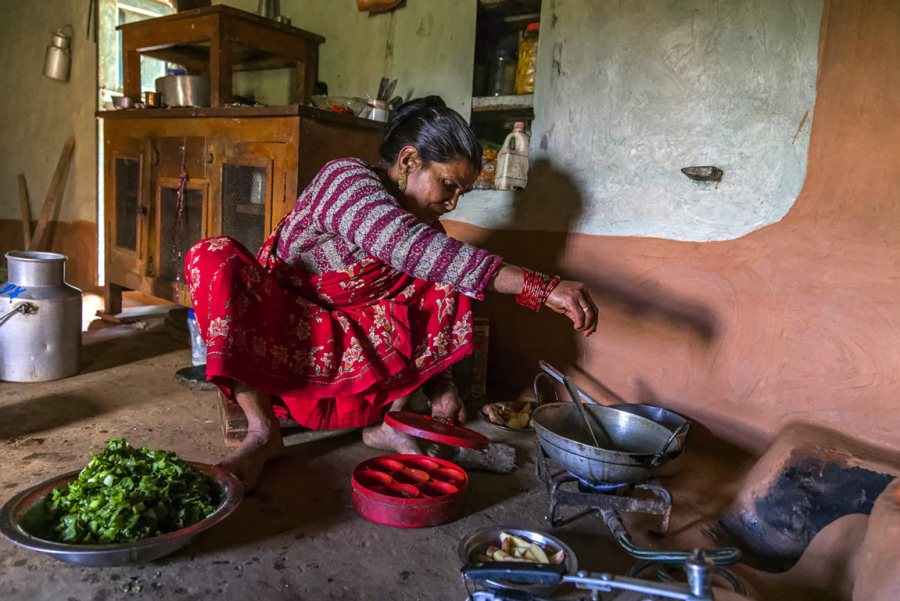


Cooking using gas from a biogas system. Human urine and faeces are mixed with water and collected in an underground pit, where they produce methane that is carried through a narrow pipe into this gas stove
Paola Di Bella
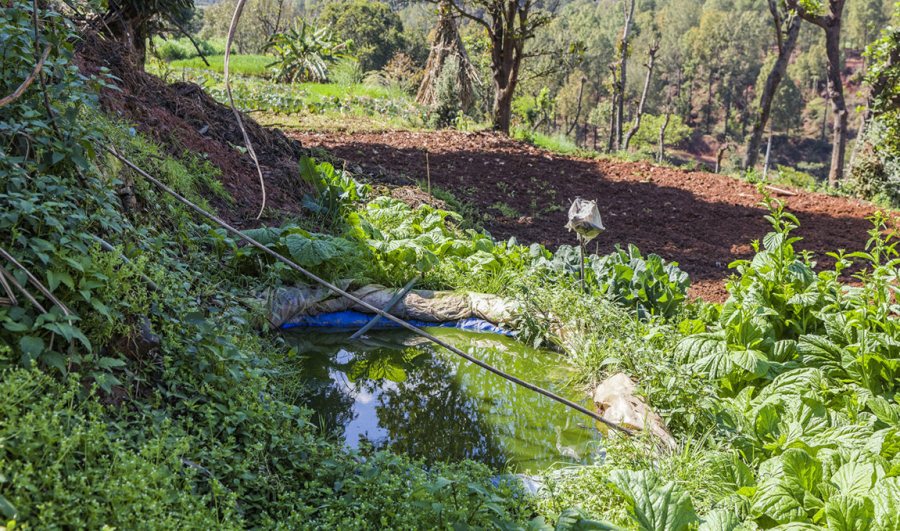


Many parts of Nepal and the wider Himalayan region are water scarce. For this reason, smart villages use the cheap and simple method of laying down plastic sheeting to collect rainwater for irrigation in ponds
Paola Di Bella
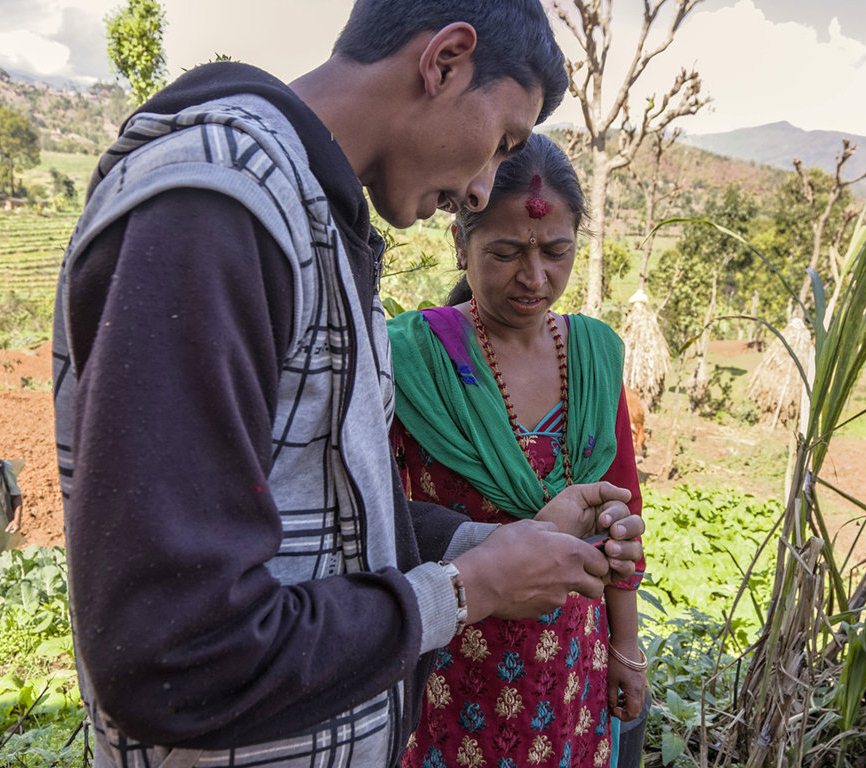


A woman and her son check crop prices on a mobile phone via text message. The message contains wholesale market prices from the Nepal Agricultural Research Council, helping farmers decide on the best day to sell their produce to maximise profit
Paola Di Bella
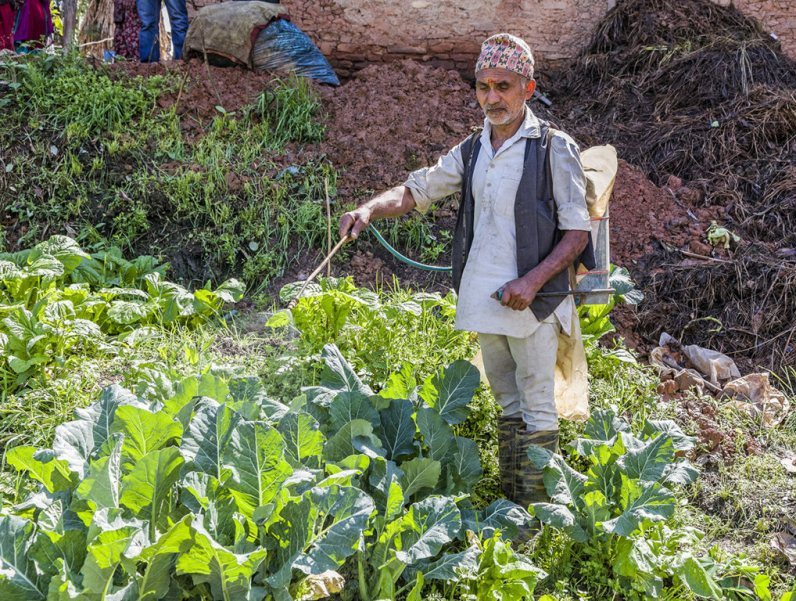


A man sprays fermented cow urine, an effective fertiliser and natural fungicide, on his crop. Since such innovations were introduced, farmers in this smart village have been phasing out artificial fertilisers and pesticides
Paola Di Bella
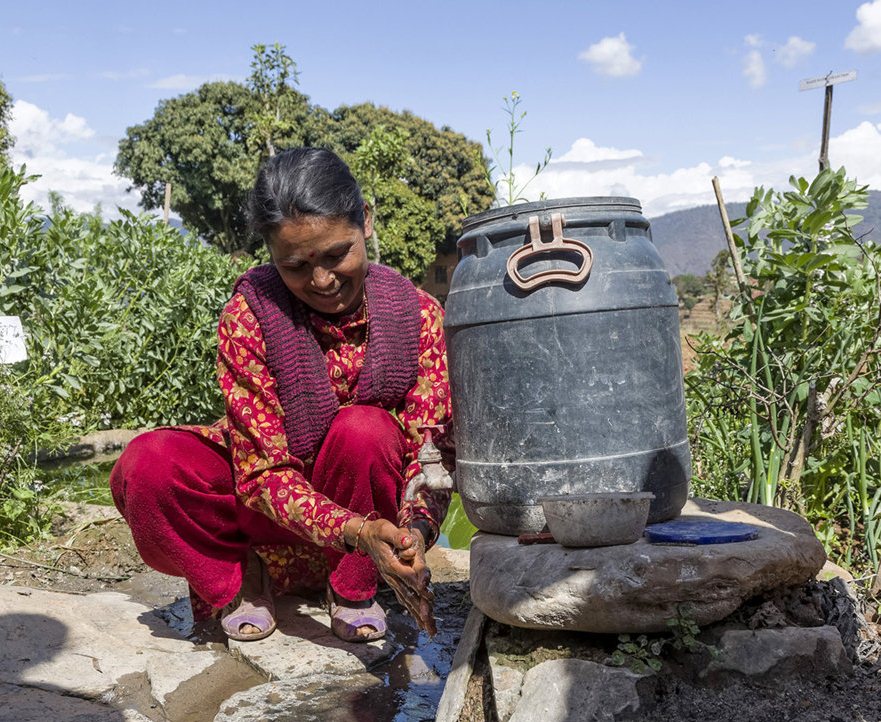


A woman washes her hands in recycled kitchen water after working in her field. A pipe connects the drainage pipe of the sink to a container, so water can be used again for tasks such as cleaning
Paola Di Bella
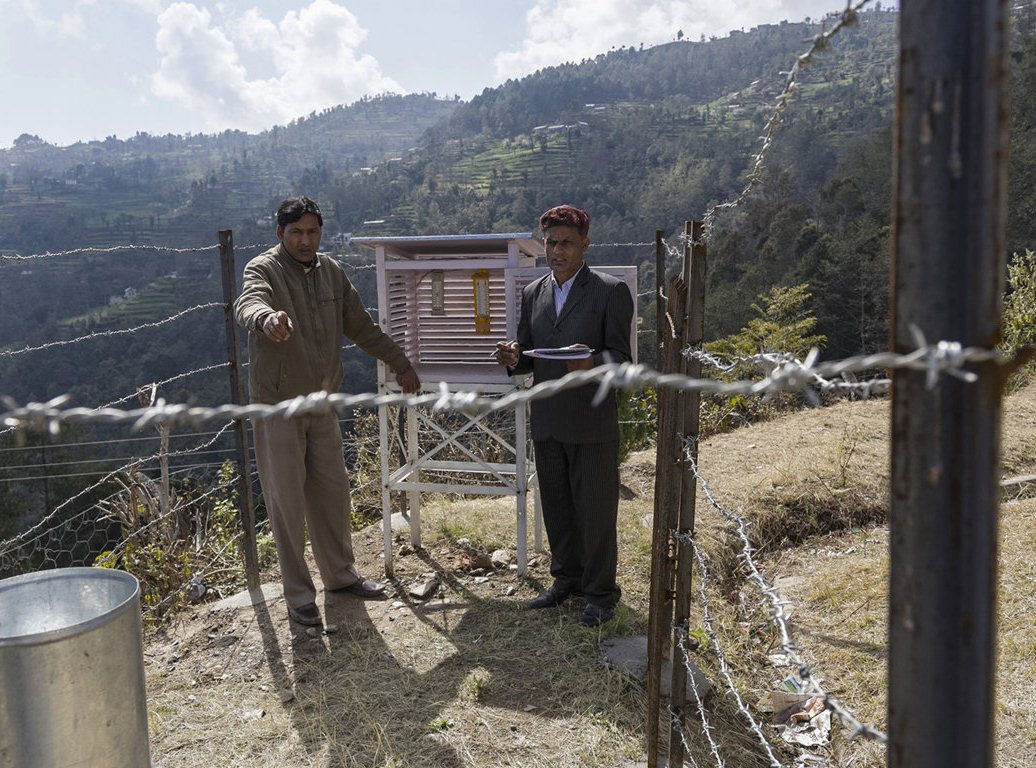


A science teacher (left) and the headteacher of the Shree Hanuman Secondary School collect rainfall and temperature readings. This data will be shared with the International Centre for Integrated Mountain Development, one of the organisations behind the Climate Smart Villages project, which will use it to study local weather patterns
Paola Di Bella
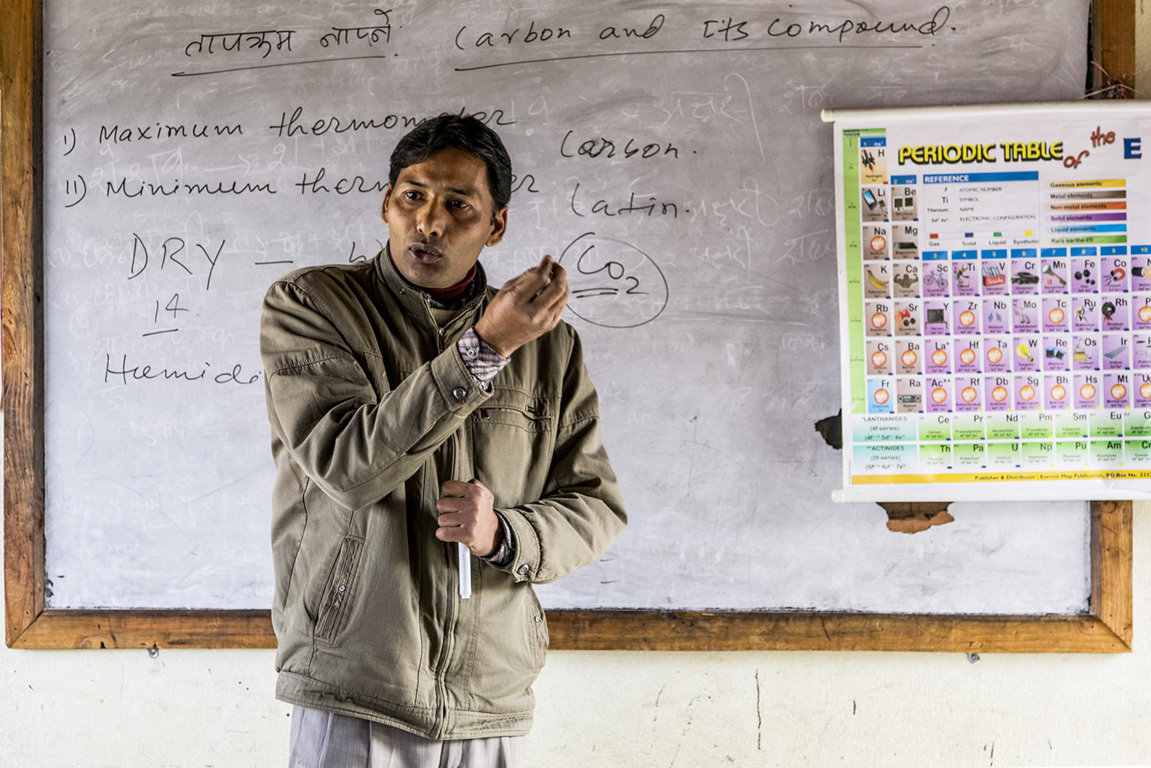


After collecting data, the science teacher uses it to explain the basics of climate change to pupils
Paola Di Bella
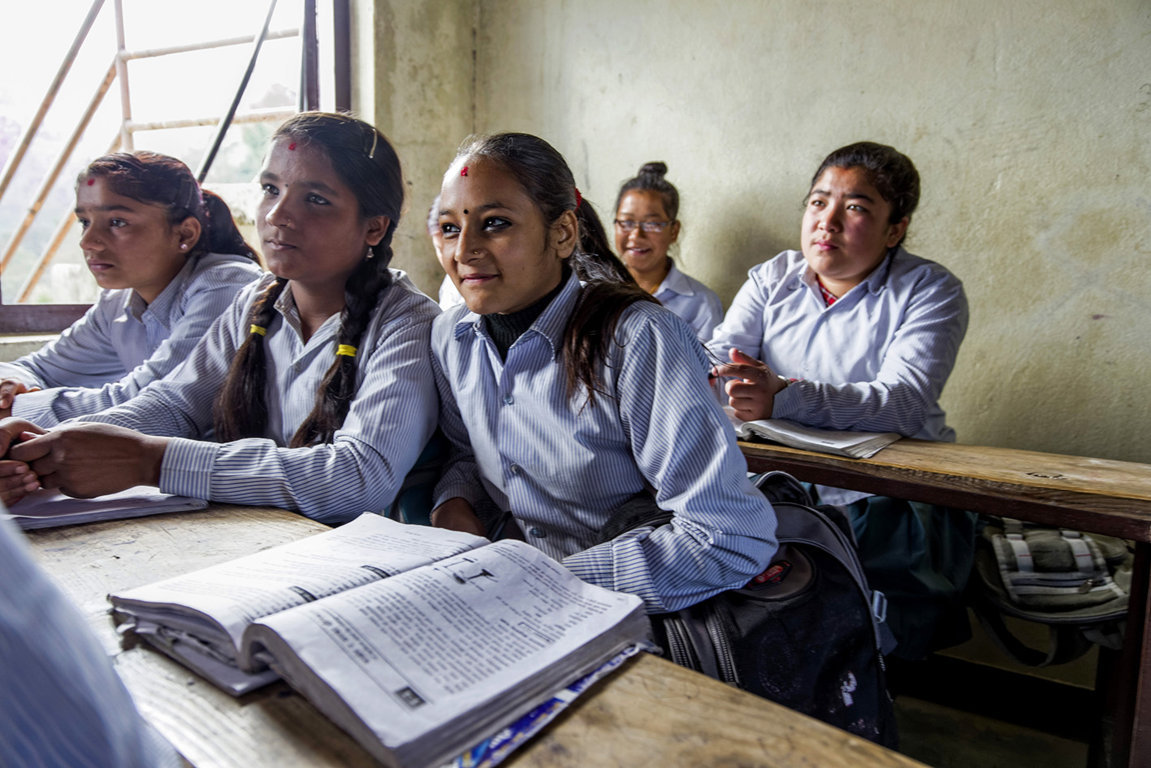


The pupils help to raise awareness of the effects of climate change among their families and the wider mountain communities
Paola Di Bella
By: Paola Di Bella
Send to a friend
The details you provide on this page will not be used to send unsolicited email, and will not be sold to a 3rd party. See privacy policy.
On 25 April, Nepal was hit by a 7.8 magnitude earthquake. But as well as quakes, the country is also vulnerable to climate change, a combination that makes it harder to build resilience and risk preparedness.
As mean temperatures rise in South Asia, the monsoon season has changed, leading to more-erratic rainfall and increasing the risk of floods and landslides that can claim lives and wreck food production.
One way of adapting to climate change and protecting local economies is to help people become ‘climate smart’. People in ‘climate smart villages’ are trained to adopt organic farming and integrate low-tech and modern technologies.
The smart villages have been developed as part of the Himalayan Climate Change Adaptation Programme, a partnership between the Nepal-based International Centre for Integrated Mountain Development and two Norwegian organisations: CICERO (the Center for International Climate and Environmental Research — Oslo) and GRID-Arendal, a foundation that collaborates with the UN Environment Programme. The pilot projects are being rolled out in partnership with the Center for Environmental and Agricultural Policy Research, Extension and Development in Nepal.
This photo gallery, shot before the earthquake, shows some of the innovations local people are introducing as part of a broader effort to adapt to climate change before its worst impacts become irreparable.
No one in the pilot villages in the Kathmandu Valley — an area badly affected by the earthquake — was injured or killed. But almost half the households were harmed in some way: houses, cattle sheds and equipment were damaged, and farm plots and water collection ponds were destroyed. But the disaster has not drastically affected the project, and the effort to build a climate-resilient Nepal will continue.













